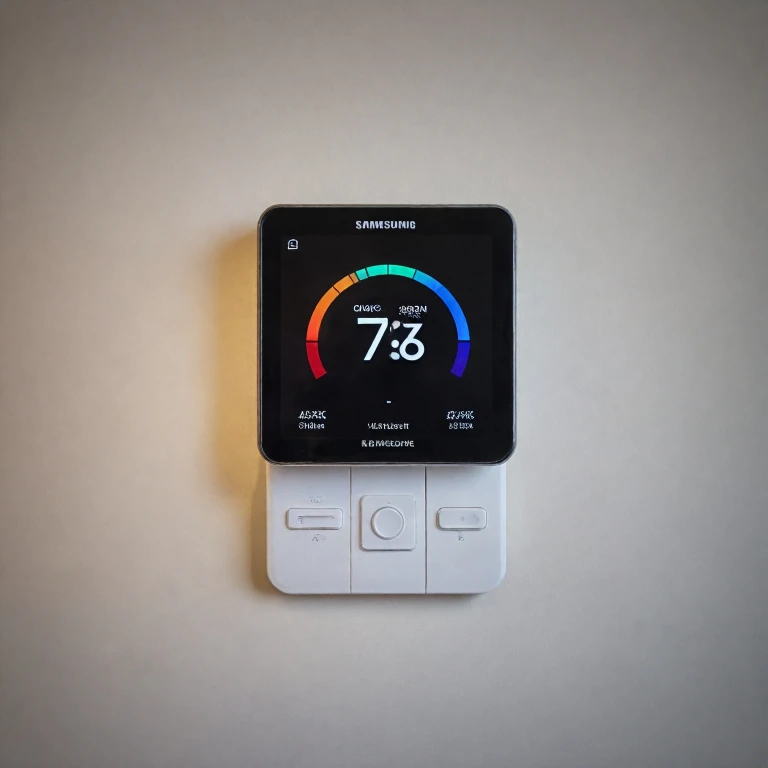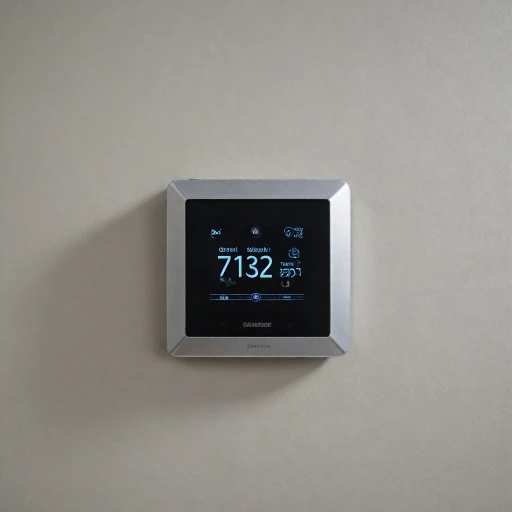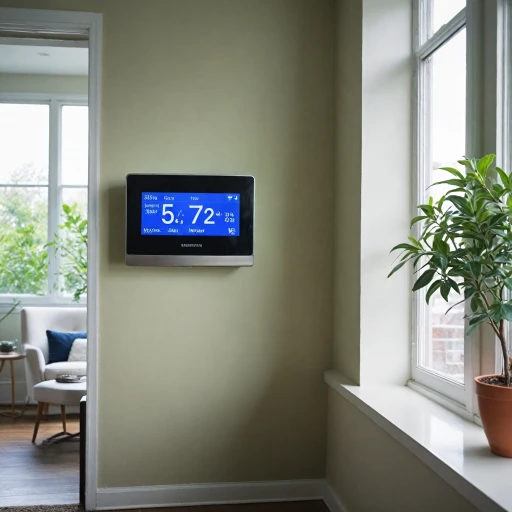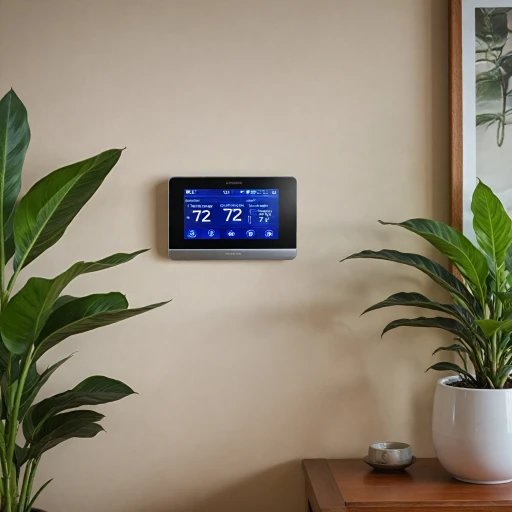What is a Wireless Thermostat Receiver?
A Closer Look at Wireless Thermostat Receivers
In the world of smart home technology, the wireless thermostat receiver plays a vital role in modernizing how we control our indoor climate. These receivers act as the communication hub between the smart thermostat and the HVAC system, allowing seamless integration and control of your home’s heating and cooling functionalities. Wireless thermostat receivers eliminate the need for extensive wiring, which makes installation simpler and more flexible. They work by receiving signals from the thermostat, which are then translated into instructions for the HVAC system to adjust the temperature settings accordingly. This wireless communication is instrumental in enabling the use of well-known smart thermostats like the Google Nest and Honeywell models, which offer advanced features such as touch screen controls, learning capabilities, and compatibility with voice assistants such as Alexa and Google Assistant. The market for smart thermostats is diverse, featuring products available on platforms like Amazon, with several customer reviews and ratings to guide your choice. When opting for wireless thermostat solutions, it is essential to consider factors like the product’s compatibility with your existing HVAC system, energy-saving potential, and the availability of additional features like programmable settings and sensor integration. For those who are looking to upgrade their HVAC control mechanisms, exploring the features of devices like the TR7000T-50US smart thermostat can provide valuable insights into what to expect from a robust thermostat system. It’s crucial to compare features and read user feedback to ensure a product meets your specific needs and preferences.Benefits of Using Wireless Thermostat Receivers
Advantages of Embracing Wireless Thermostat Receivers
Wireless thermostat receivers have become a cornerstone in modern HVAC systems, offering a plethora of advantages that cater to the needs of tech-savvy homeowners and those looking to optimize their energy usage. Here's a closer look at why these devices are gaining traction:
- Convenience and Flexibility: Wireless thermostat receivers allow you to control your home's temperature from virtually anywhere. Whether you're lounging on your couch or halfway across the world, you can adjust settings via a smartphone app, ensuring your home is always at the perfect temperature.
- Energy Efficiency: By using smart algorithms and learning capabilities, devices like the Nest Learning Thermostat can adapt to your schedule, helping you save energy and reduce utility bills. The ability to program heating and cooling cycles ensures that energy is not wasted when you're not home.
- Integration with Smart Home Systems: Many wireless thermostats, including those from Honeywell and Google Nest, seamlessly integrate with smart home ecosystems. They work with Alexa and Google Assistant, allowing for voice control and automation within your smart home setup.
- Enhanced User Experience: With touch screens and intuitive apps, these devices provide an easy-to-navigate interface. Customer reviews often highlight the user-friendly nature of these products, which simplifies the process of managing home comfort.
- Improved Comfort: Advanced sensors in smart thermostats ensure precise temperature control, enhancing comfort levels in your living space. This is particularly beneficial in homes with varying temperature zones.
For a deeper dive into the specific advantages of certain models, you might find it helpful to explore the benefits of the CRSEH267AS smart thermostat.
How to Install a Wireless Thermostat Receiver
Setting Up Your Wireless Thermostat Receiver
Installing a wireless thermostat receiver can be straightforward, especially if you follow the steps attentively and consider the compatibility of your HVAC system. While each product differs slightly, gaining a general understanding will smooth the process.- Read the Manual: Each smart thermostat model, whether Nest, Honeywell, or another popular brand found on Amazon, comes with its own set of intricacies. Always start by thoroughly reading the product manual. This is crucial for understanding specifics, such as whether a wire is required for the thermostat.
- Shut Down Your HVAC System: Before you begin, ensure you power off your HVAC system at the circuit breaker to avoid any potential hazards. Safety here can't be overstressed.
- Remove the Existing Thermostat: Carefully unscrew your existing thermostat while taking note of how the wires are connected. It might be helpful to take a photo for reference.
- Position the New Wireless Receiver: Determine the ideal location for your new receiver. It should be centrally located for optimal range to both the thermostat and your smart devices like Alexa or Google Assistant.
- Wire the Receiver: Connect the necessary wires to the wireless thermostat receiver, matching them according to the labels. If you’re unsure, consult a professional or contact customer support.
- Mount the Thermostat: Once wired, mount your new thermostat and restore power. Most smart thermostats, such as the Nest Learning Thermostat or Google Nest, come with interactive touch screens or app controls to assist with setup.
- Configure the Settings: Using a wifi thermostat enables you to adjust the settings from your smartphone app. Here, you can set your preferred temperatures, schedules, or even engage the programmable features to maximize energy efficiency.
Common Issues and Troubleshooting Tips
Identifying and Resolving Common Issues
Wireless thermostat receivers are convenient and smart. However, like any tech product, they can experience issues. Here are some common problems and solutions to help ensure your device is running smoothly:
- Connectivity Problems: If your thermostat loses connection to the receiver, check the WiFi network. Ensure the router is functioning and the thermostat is within the signal range. Rebooting the router or the thermostat can also be a solution.
- Inaccurate Temperature Readings: If your thermostat displays incorrect temperature, the sensor might be compromised. Clean any dirt around it, and check settings for accuracy. If using programmable thermostats, ensure the schedule doesn't conflict with desired settings.
- Unresponsive Device: If the device is not responding, whether it be a smart thermostat from Amazon like Nest or a Honeywell model, check for locked screens and ensure power is supplied. For products requiring a "wire required" setup, confirm all connections are secure.
- App Malfunctions: Smart thermostats often come with apps for remote control. If the app crashes or fails to open, update to the latest version or uninstall and reinstall. It's crucial when using features like Alexa or Google Assistant.
- Energy Inefficiency: If you're not saving energy as expected, ensure the system is programmed correctly. Many smart thermostats, like the learning thermostat options, need time to adapt to user habits for optimal performance.
Customer reviews often suggest consulting the product manual or reaching out to customer support if troubleshooting does not resolve the issue. Maintaining the utility of your smart thermostat ensures energy efficiency and effective heating and cooling control in your home.
Comparing Wireless Thermostat Receivers
Evaluating Different Options for Wireless Thermostat Receivers
When diving into the world of wireless thermostat receivers, understanding the variety available is essential. Each product comes with its unique features, benefits, and considerations. Here’s a closer look at some popular choices:- Nest Thermostat: Known for its learning capabilities, this thermostat adapts to your schedule over time—leading to significant energy savings. It seamlessly integrates with Google Assistant and Alexa for convenient voice control, offering a smart solution for modern homes.
- Honeywell Thermostats: Offering a range of options from basic to highly programmable, Honeywell thermostats can suit diverse needs. Many models come equipped with touch screens and app control, providing ease of use and flexibility in heating and cooling management.
- Ecobee Smart Thermostat: Featuring a robust sensor system, it's designed to optimize home energy use by detecting room occupancy. The Alexa-integrated product enhances home automation, combining performance with energy efficiency.
- Amazon Smart Thermostat: For Alexa users, this thermostat offers a cost-effective option while maintaining solid functionality. It’s a simple yet effective starter choice for integrating smart home technology at a reasonable price.
- Installation Requirements: Does your choice require a C-wire, or can it operate wirelessly? Consider the complexity of the installation to match your DIY skills or professional service preference.
- Feature Set: Look at the programmable features, including app control and compatibility with smart home systems like HVAC. These features play significant roles in the overall convenience and energy-saving capabilities.
- Customer Reviews and Ratings: Consumer opinions, often available on websites like Amazon, provide insight into the product’s reliability and performance. Many customers rate these devices highly for how they simplify temperature control and contribute to energy efficiency.
- Price vs. Value: While price is vital, assess how the thermostat’s features and capabilities balance against the cost. Sometimes a higher-priced model may offer additional benefits that justify the investment in the long run.







